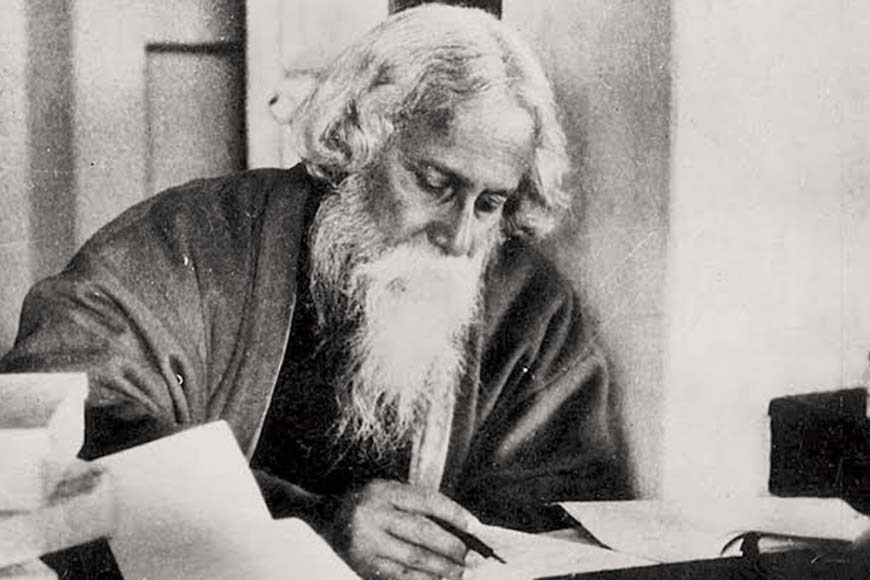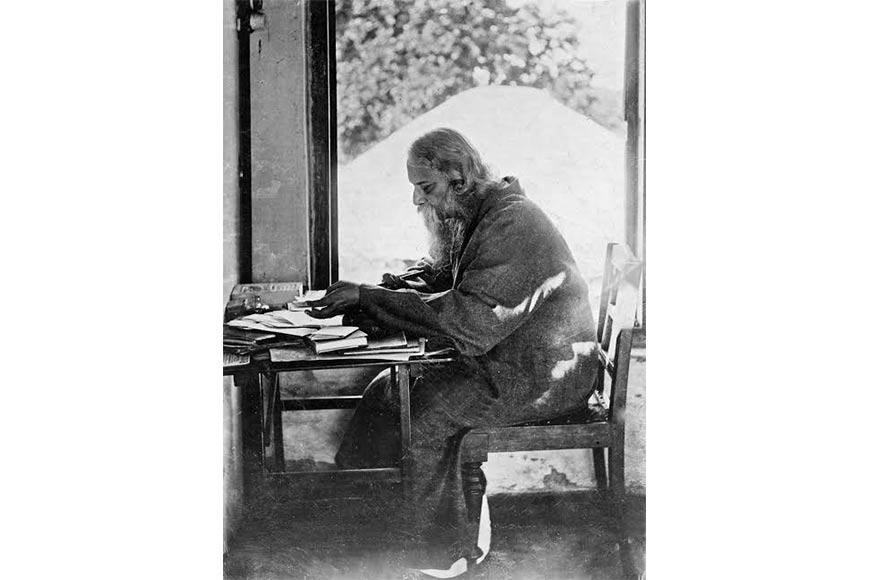Tagore's love for ink and paper

For the poet, Gagan Harkara was his peon, the great baul exponent Lalan Fakir was his supplier of betel leaves and one of the palkiwallahs was his Guru -- that’s what Santidev Ghosh writes in his book Rabindrasangit, reflecting upon how important post or letter bearers were to Rabindranath Tagore. The famous song of Gagan Harkara Ami kothaye pabo tare, was adopted by the poet to Amaar Shonar Bangla, the national anthem of Bangladesh.
With vanishing letters and art of letter writing, we also come across the disuse of pen and ink-pot, based on which Tagore wrote a heart-warming short story called Apad. He writes:
Satish brough a famcy inkstand from Calcutta. It is flanked on both sides by two small boat-shaped conch shell pots and adorned in the middle by a swan made of German silver, which balances a pen in between its spread out wings. Satish was very fond of this contraption, his fondness being evident from the care with which he would dust the equipment with a silk handkerchief. Kiran would make fun of this by stroking the swan’s beak and muttering: ‘You the king of swans – how could you be reduced to this state from your Brahminical lineage.’ Exchanges like this would become topics of friendly banters between her and the brother-in-law Satish.
 The poet, the writer, the philosopher...
The poet, the writer, the philosopher...
Tagore loved writing letters and often wrote to his son Rathindranath that are still a treasure trove. In October 1930 he writes:
Please bring copious amounts of coloured ink and paper – the latter from Germany – but note that France produces the best quality ink. However, remember to brink large bottles, lest they are emptied soon.
Such was the love of Tagore for ink and paper. He again writes on 21st November 1930 to his son:
Professor Formichi had come. He is still sincerely attracted towards us Indians. Upon seeing me, tears started rolling down from his eyes. I asked him if it would be alright if I return to India via Italy. He replied that a simple letter to Mussolini would clear all complexities. I told him that I would write. I am enclosing that letter to you. If you agree, please post the letter – it is not good to keep alive the animosity with Italy. I am not quite sure of how to write an Italian address – it is perhaps like this: II Duce/ Signor Mussolini
Also read : The Nobel Prize news that came via Telegram
In the short story Khata, again Tagore’s love for letter writing gets priority. The story goes:
Uma has become a pain since the time she learnt how to write. She is tirelessly inscribing on all the walls in oblique and oversized letters the following lines: Jal Parey, Pata Narey. Uma’s presumptuous elder brother Gobindalal had written a voluminous essay on the apparent misconceptions about physiology, prevalent in certain European scientists, employing bombastic language, devoid of logic. On one lonely afternoon Uma took her brother’s ink and pen to scribble in large letters on the hapless essay: Gopal is a very good boy. He doesn’t mind savouring whatever is fed to him!
Nearly seventy-five years on, the modern world is invaded by cell phones, where letters and the art of letter writing have already died a silent death. May be the simplicity and the easy pace of Tagore’s world eludes us today.
(Inspired by A random walk in Santiniketan Ashram by Sushanta Dattagupta, and other related publications on Santiniketan.)










